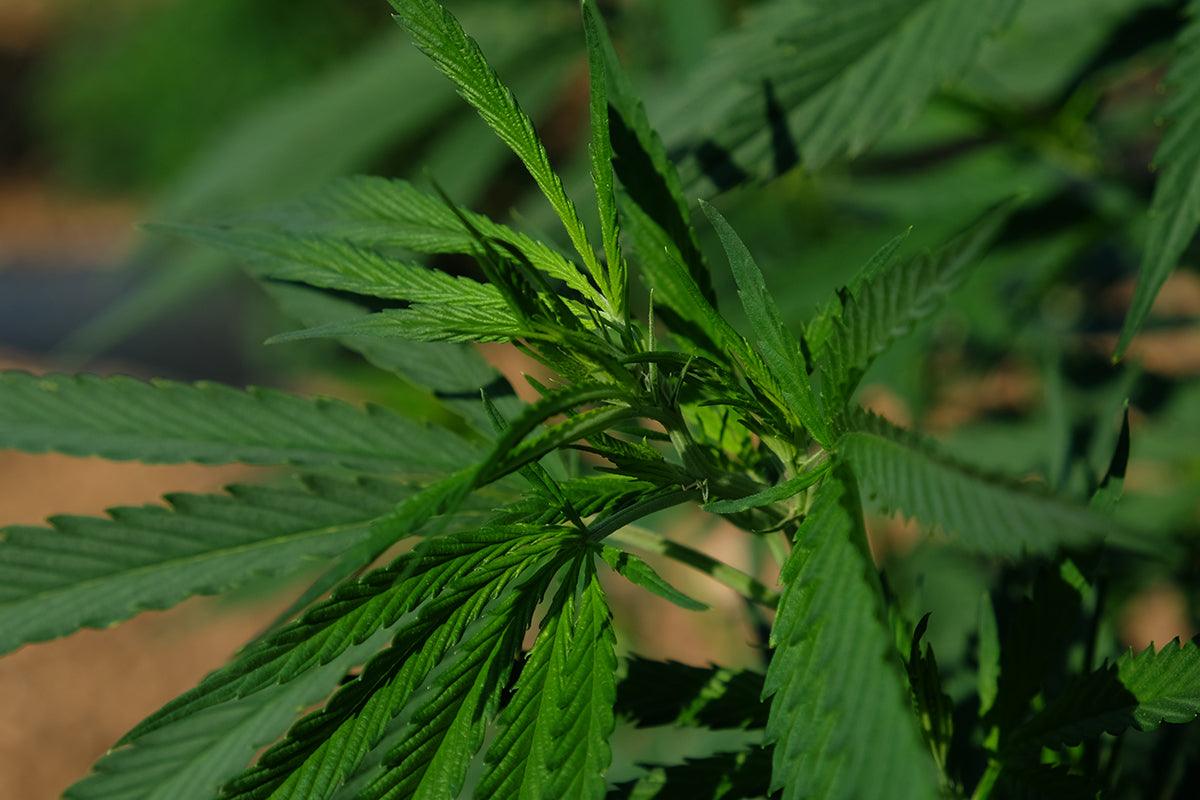The first phase is gone: your Cannabis plant has gone from being a spindly shoot to looking like a real tree. The seed opened to reveal the sprout, which strengthened and filled with leaves. Many novice growers think that the vegetative phase is less important than flowering, but they are wrong: the growth of the plant is a cycle , and if one of its phases did not go as expected, the subsequent ones will inevitably suffer as well.
The success of the growth phase of a Cannabis plant is linked to the stability of some parameters : it is important that the soil in which the roots develop is the most suitable for the plant, that the variations in light are constant, that the plants have of sufficient oxygen and that water and all adequate nutrients are provided. It is therefore necessary to constantly keep these factors under control to ensure that the plant reaches the flowering phase in the best possible conditions.
In this article you will find answers to the following questions:
- Flowering: what happens?
- How does the plant change during flowering?
- What are the most common problems during the flowering phase?
- Why is it important to wash the roots before harvesting?
Listen to the audio version of our article while visiting our store :
Listen to "The_phase_of_the_flowering_of_cannabis_compress" on Spreaker.
Flowering: what happens?
When the vegetative phase comes to an end, the cannabis plant begins to develop buds. The end of the vegetative phase is easily recognised: when the pistils , which appear as white filaments, begin to emerge from the nodes of the female specimens , it means that it is time.
Outdoors, flowering is activated during the month of August, when the hours of darkness and those of light begin to balance , up to 12-12 cycles. Outdoor growers usually plant between April and May, so that in August everything is ready to follow its natural cycle without compromising the yield of the crop.
Indoor growers can activate the flowering of plants by setting a 12-12 lighting cycle (i.e. 12 hours of light, 12 hours of complete darkness). During flowering, the size of the buds progressively increases.
When plants reach optimal structure and size, indoor growers adjust the photoperiod . When the cycle goes from a phase 18-6, with 18 hours of light and 6 hours of darkness, to a phase 12-12, the plant goes into alarm.
The cannabis plant senses that winter is approaching and that its life cycle is coming to an end . Therefore it activates the flowering phase, to produce flowers and seeds to be released into the environment in order to reproduce.
Are you looking for light cannabis flowers at an advantageous price? Try our XL pack
In autoflowering varieties, the development of the buds is not affected by the photoperiod. In these specimens, the internal biological clock is independent of variations in the hours of light.
Autoflowering genetics can grow perfectly even when exposed to 22 hours of light for the entire growth cycle, from germination to harvest. If in doubt, the best choice is to follow a scheme with 20 hours of light and 4 hours of darkness and, when the time comes, it will flower without the need for alterations to the light cycle.
Flowering week by week
In the first days of flowering, cannabis plants enter a transition phase: the plant believes that winter is approaching and will tend to show more accelerated growth . They may even double their initial size, as well as develop a large amount of leaves and branches to become stronger and more robust.
In the second week of flowering, the first white pistils will already be visible, which will begin to appear on all female plants.
These are white hairs that appear between the main stem and the secondary branches, which group together to form the buds. This is the moment in which the difference between male and female plants emerges ; males do not develop pistils - which are nothing other than the female reproductive organs - but rather small pollen sacks.
At this stage it is important to promptly recognize the male plants and distance them from the females, to prevent them from pollinating nearby flowers , with the result of filling them with annoying seeds.
During the third week of flowering the plants should be double the size of week one. In this phase, however, the growth spurts gradually begin to decrease , until they stop completely.
Where previously the first white hairs began to appear, the first buds are taking shape . The plants do not yet have large quantities of resin glands and trichomes , which means that the odors will still be light and not very pungent.
It is important to monitor the quantity of nutrients you are providing to the plant, because in this phase the requirement increases in proportion to the growth effort.
However, being vigilant does not mean exaggerating, so as not to run the opposite risk: plants that have been supplied with an excessive quantity of fertilizer may present so-called "fertilizer burns" , which appear on the tips of the leaves, which tend to discolour. If this should happen, the fertilizer intake must be reduced immediately.
By the fourth week of the flowering phase, your cannabis plants should have stopped growing, devoting all their energy to bud development . As the days pass, the white hairs will join together to form the buds, which become increasingly larger and heavier. In this phase the plants increase the production of trichomes and release very pungent odors.
In the fifth week of flowering the buds are visible on all the branches of the plants. As the number of buds increases, cannabis plants will become increasingly stockier and heavier. The development of the flowers and the very intense smell warn that the flowering has reached full bloom.
Some of the white pistils may become darker and more brownish. Flowering is in its last phase, which should finish within three to four weeks .
The most common problems
There are some important factors that must be kept under control, to prevent the plant from becoming stressed during flowering . Here are the most popular ones.
The ph
The pH level in the root system of plants is an important factor throughout their life cycle, especially during the flowering phase. pH problems can cause curling or wrinkling in leaves , similar to those caused by nutrient deficiency.
Leaf spots and burnt edges can also be indicators of a pH problem. It is important to identify the root cause of these symptoms before treating plants as if they have nutrient deficiencies.
The appropriate kits can be used to check the pH in the root system of your plants. When growing hydroponically , the root zone should ideally have a pH between 5.5 and 6.5, while when growing in soil the root zone pH should be between 6.0 and 7.0.
If the pH is too high or too low it is possible to use products that modify it up or down to bring the plants back to a healthy balance.
The male plants
If there are male flowers within the crop, they will inevitably pollinate the female flowers . When a female plant has been pollinated it begins to produce seeds , distracting itself from its main goal, which is to grow flowers as much as possible.
To avoid pollination, it is essential to keep an eye on all plants during the early flowering phase and remove males as soon as possible.
Proximity to male plants also causes hermaphroditism : female plants begin to develop male parts and, potentially, could pollinate all the other plants in the crop.
It is recommended to remove the male parts from the plant as soon as you recognize them. Or better yet, remove these plants from the growing space and grow them in a separate environment to minimize any risk of pollination.
The lighting
Light is a fundamental element for the productivity of a cannabis crop in terms of health, vitality and yield. But just like nutrients, too much good light can certainly cause harmful effects.
Unless you are growing an autoflowering strain, you will need to change the light and dark cycle to 12 hour intervals . It is important that the light is at a sufficient distance so as not to burn the apical buds.
Molds on flowers
Mold thrives in damp, dark conditions with poor air circulation . Dehumidifiers and fans are the best tools in the battle against mold. There are hybrid genetics with high resistance to mold.
These are plants recommended especially for hot, humid regions, which amplify the risk.
The risk of mold persists even after harvest. Drying the flowers must take place in a dark room because light corrupts the active ingredients of the flowers. You need to hang plants and branches with the flowers upside down, trying to maintain an ambient temperature of around 20°C for the first 3 days , followed by a temperature around 17-18°C for around 10-20 days.
Washing the roots
Before reaping the fruits of your hard work, you will have to remember washing the roots : this is a very important process, which serves to eliminate excess nutrients from the substrate until it becomes practically inert.
It is advisable to start 10 or 15 days before harvesting, providing the plant only water and no further nutrients. This will cause the plant to consume the nutrients stored in the leaves, freeing it from fertilizers.
This has a significant impact on the quality of the buds, which will have a better flavour.
If the article was of interest to you, share it on social media with the rest of the Community, every single share helps us support our blog and keep you 360° informed on the world of Cannabis.
Here's how we grow cannabis:
You might also be interested in:










